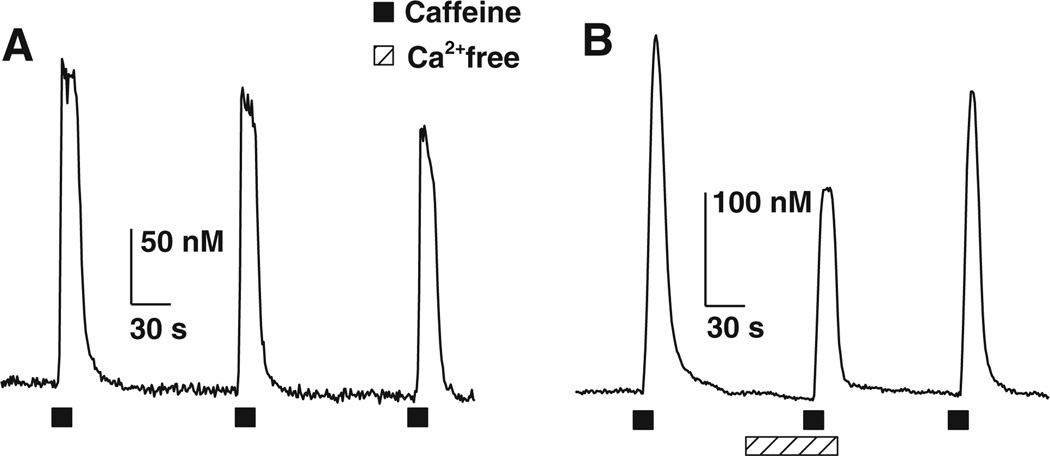Fig. 1.
Caffeine-induced Ca2+ transients (CICTs) are partially dependent upon extracellular Ca2+. a Reproducibility of CICTs. Three representative CICTs evoked by three 15-s pulses of 10 mM caffeine in normal Locke solution. The CICTs had an average peak amplitude of 218 ± 20, 221 ± 24 and 212 ± 34 nM (n = 4) for the first, second and third application of caffeine, respectively. b CICTs elicited by caffeine (10 mM) in the presence or in the absence of extracellular Ca2+. The first and third CICTs were evoked by caffeine in normal Locke solution. The middle CICT was evoked by caffeine in a Locke solution containing nominally zero Ca2+. The difference in amplitude between the averaged control CICTs and the second CICTs represents the magnitude of Ca2+ influx across the plasma membrane. The amplitude of the CICTs recorded in nominally Ca2+-free Locke solution averaged 45 ± 9% of the amplitude of control CICTs (n = 6) recorded in normal Lock solution. Solid squares depict time of caffeine application; hatched bar depicts time when the neurons were superfused with nominally Ca2+-free Locke solution

